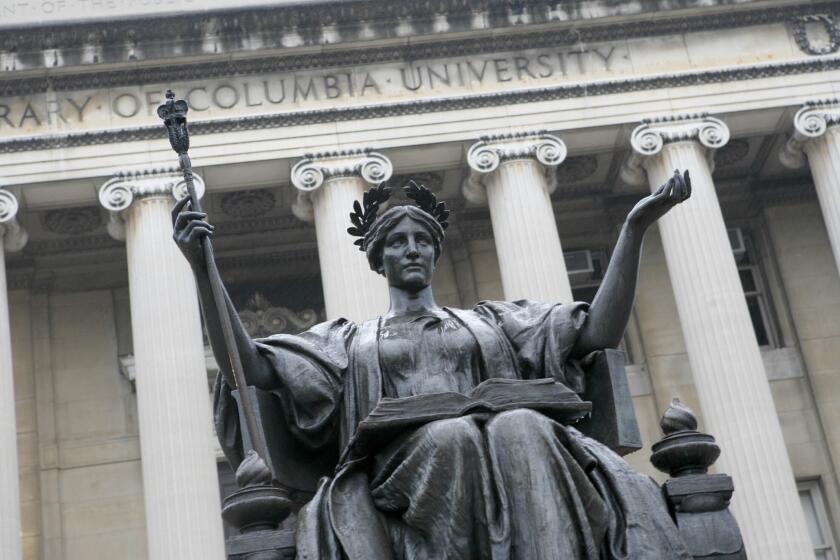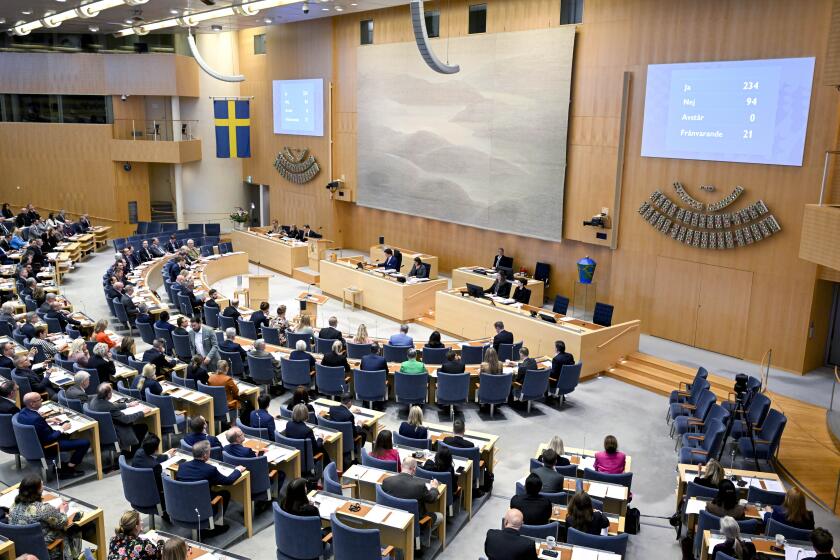What a Storm Can’t Crush -- a Town’s Heart
The storm stole almost everything from this proud old town by the sea -- everything, that is, except its soul.
Six months after Hurricane Katrina, entire blocks have been bulldozed, leaving eerie empty spaces -- like missing teeth -- where quaint neighborhoods once stood. “The Pass,” as everyone calls it, is a patchwork of FEMA trailers, RVs and pop-up tents. The town center is a field of drab-green Army tents used as dwellings and offices. City Hall is a double-wide trailer, as are the police station and library.
But the spirit of a settlement founded in 1699 is stronger than ever. Fierce about its history, Pass Christian is equally intent on shaping its post-hurricane future. On any day of the week, residents are out in the streets, talking about what they want their ruined town to look like -- and more important, what they want it to be like.
Preserving their town’s quirky character, they say, is every bit as important as laying down bricks and mortar.
“The community feel that draws people here still remains,” said 29-year-old Jeremy Blauvelt, an Episcopal youth minister. “There is something very special here that the hurricane couldn’t take away.”
To help Pass Christian reconfigure, a team of architects from California and elsewhere converged here recently, hoping to hammer out a reconstruction plan that could serve as a model for the rest of the battered Gulf Coast. The goal is to borrow from the past for a rebuilding blueprint without turning the town into a historical theme park -- and in the process offer the country a new way to look at development.
Residents are deeply involved in what they admit is a daunting endeavor. Pass Christian -- legendary as a laid-back locus of idiosyncratic charm -- was all but destroyed when Katrina struck on Aug. 29.
“We can’t escape the devastation. It’s everywhere,” said Martha Murphy, who has lived here for most of her 54 years. “But we see Pass Christian through our hearts, not just our eyes. We know it is going to change. We just want to retain what it had that made us love it.”
As they progress from the shock of losing everything to the reality of starting over, the 11 towns and cities along this state’s coast have held scores of charrettes -- or architectural planning sessions -- to address recommendations made by Gov. Haley Barbour’s Commission on Recovery and Renewal. The gatherings give residents a chance to air their views about what they want their communities to look like.
The charrette that wrapped up in Pass Christian on Sunday goes several steps further, after months of formal and informal meetings in this town 57 miles east of New Orleans. The gathering is expected to generate a new “smart code” of building directives that focuses on form and design. It also presents the possibility of an unusual mixed-use package in the form of residential units attached to a Wal-Mart.
“This is hugely important,” said Brian Sanderson, deputy director of the Office of Recovery and Renewal. “Pass Christian can be a model for the 10 other cities on the coast.
“In a way, if it works, they could be a model for the way that America looks at development. It can make all the difference when we look back 10, 20, 30 years from now as to whether we measure our efforts a success or a failure.”
City Atty. Malcolm Jones, who has helped guide his hometown’s recovery since days after the storm, agreed.
“What we have here right now is a wide-open slate,” he said. “We want to do this right.”
About two-thirds of the town’s 6,500 residents have returned -- enough families that 7 out of 10 children who were enrolled in Pass Christian schools before the storm are attending classes in neighboring areas where schools were less damaged.
Every public building in town was destroyed by Katrina, along with almost all the businesses and about 80% of the homes. Pass Christian’s tax rolls dropped from 4,000 structures to 170.
Many blocks still contain ruined homes and offices that are nothing but piles of bricks or heaps of splinters. But the 30-foot mounds of debris that stood on most streets for weeks after Katrina are gone. The bulldozed areas add a denuded quality amid the rubble.
A handful of homeowners already are rebuilding, working within the boundaries of tough new Federal Emergency Management Agency regulations.
But the broader question is how to restore the personality of a town known for a relaxed sense of openness that largely ignored race and class, and made strangers quickly feel welcome.
“People are just adamant about coming as close as possible to what we had,” said Pat Godley, a retired candy executive who serves on the town’s planning board.
Pre-Katrina, Pass Christian was a mix of grand homes and tiny bungalows. It had little corner grocery stores. Unlike most other Mississippi gulf towns, it insistently had no casinos. A Wal-Mart on the edge of town was viewed as practically in the suburbs.
Laura Hall, whose Santa Rosa, Calif., urban design firm has been advising Pass Christian, said the town had been torn between putting the brakes on runaway construction and quickly restoring financial equilibrium. Hall said that with its seaside location, the decimated area was fertile ground for big developers who might be more interested in its potential for profit than any kind of legacy.
“They are on their way, galloping as fast as they can, and they have money,” she said. “They are able to immediately rebuild, and they could be filling city coffers very quickly.”
The design under discussion at last week’s meetings calls for a quaint and walkable town center, following Pass Christian’s tradition, Hall said. Buildings would be low -- no more than three stories -- with taller condominiums and commercial complexes on the town’s edges.
One possible development on the town’s outskirts has the cheery name of Wal-Mart Village, repackaging the familiar big-box store into a plaza-style complex that includes housing and office space. Corporate officers from Wal-Mart, including the company’s director of architecture, attended the meetings, Hall said, along with other builders and developers.
Hall said the resilience of Pass Christian came as a surprise. “What I didn’t expect is that the people would want to rebuild right after losing their entire town. It is that ‘Gone With the Wind’ thing. The dirt under their feet really is gold to them.”
Murphy, living in an RV on the grounds of her ruined home, said that as they contemplated rebuilding, many in the town were battling a condition she called Katrina Brain.
“It causes administrative slippage,” she said, only half-jokingly. “The things that were easy for us to accomplish before are so astoundingly, extremely difficult for us now. It is just like turning a treadmill up to the highest speed to try to get anything done.”
Although most of the town has voiced opinions about reconstruction plans, Murphy said the process had been mercifully lacking in acrimony.
“Everyone wants to get on with it,” she said. After all the town has been through, “we need to see something happen that is wonderful.”
More to Read
Start your day right
Sign up for Essential California for news, features and recommendations from the L.A. Times and beyond in your inbox six days a week.
You may occasionally receive promotional content from the Los Angeles Times.






